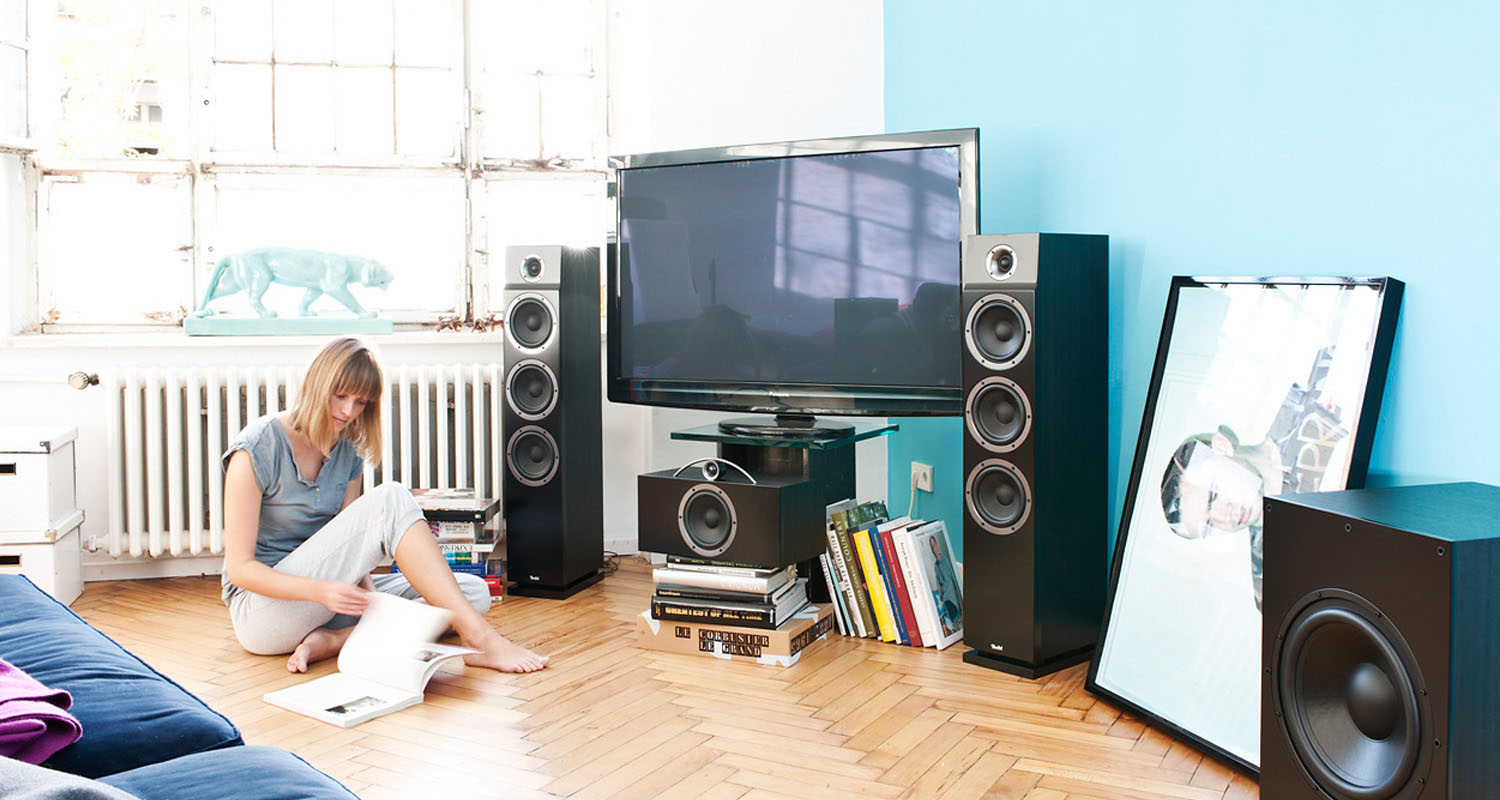Imagine enjoying HD picture quality and hi-fi sound via a wireless HDMI connection. It sounds almost too good to be true, but there are systems available today that offer exactly this. They make it possible to connect source devices like a Sky TV Digibox, Blu-ray player or game console wirelessly to your television.
Typical use cases for Wireless HDMI
Standard HDMI has become the connection of choice for home entertainment thanks to its ability to transmit HD video as well as lossless audio in a single cable. Since the distance between source devices like gaming consoles and televisions is generally small, there is not normally a need to establish a wireless connection. In the following use cases, however, wireless HDMI could really come in handy.
- Creating an uncluttered look with wall-mounted beamers
- Movie nights or picture slideshows outside are more convenient with a wireless connection
- Wireless connections can be easier with TVs mounted very high on a wall
How wireless HDMI works
Wireless HDMI systems can be purchased at most electronics stores and consist of a transmitter and a receiver. The transmitter connects to a source device via HDMI cable and the receiver connects to the playback device the same way. Ironically, wireless HDMI requires precisely two HDMI cables in order to work. In addition, both the transmitter and the receiver must be connected to a power source. Since both the transmitter and receivers are both generally small and lightweight, it’s generally not a problem finding a place for them near your beamer or wall-mounted television/soundbar.
As soon as everything is connected, the transmitter and receiver communicate via Plug-and-Play. The connection can take a few moments to establish. Note that it is not normally possible for a single transmitter to supply multiple receivers with a signal and that the signal may have difficulty navigating barriers like walls depending on their construction (i.e. dry wall versus steel and concrete).
The limitations of wireless HDMI
Wireless HDMI is transmitted via radio signal and does not require a WiFi network to work. It is also unlikely that a wireless HDMI system will cause disruptions in the signals sent by any nearby WiFi routers.
There are three transmission standards generally used for wireless HDMI connections: Wireless HD, WHDI and a newer standard called IEEE 802.11ad, also known as Wireless Gigabit or WiGig. Wireless HD and WHDI are the most common and principly differ in their bandwidth. Wireless HD uses 60 GHz band, whereas WHDI uses 5 GHz. The following is an overview of the advantages and disadvantages of each:
✓ WHDI: 5 GHz sets such as the Falcon HD Wireless Transmitter can send signals through walls
✘ WHDI: The system can suffer from latency level high enough to be a disadvantage with some games.
✘ WHDI: These systems are far less common than those based on Wireless HD so there will be less selection.
✓ Wireless HD Pro: The devices produces very low levels of latency and are therefore very good for gaming.
✘ Wireless HD: 60 GHz sets such as the Ligawo HDMI Wireless Extender are suitable for transmission within a room as they do not easily pass through walls.
Features to look for with Wireless HDMI
The first thing to look for is the range of the radio signal created by the system. If the devices communicate out each other’s line of sight via a so-called “clear air” link, a 30 metre range can generally be achieved. There are even manufacturers that promise a 100 metre clear air range between devices. In general, wireless HDMI supports full HD and 3D picture quality. Surround audio formats like Dolby Digital 5.1 are also supported. Lossless HD sound, however, is not always possible. You’ll need to check whether the wireless HDMI system you’re interested in supports Dolby True HD or DTS HD Master Audio. You might also want to check if it offers HDMI CEC. Infrared extenders are sometimes used to control the system over larger distances and through obstacles. They can make it possible, for instance, to control a Blu-ray player in another room.
Convenience comes at a price, however, those who want to minimize cable chaos will need to be willing to shell out at least € 150. More expensive systems can cost as much as € 400.
Wireless HDMI at a glance
- Radio-based transmission medium for audio and video
- Does away with the need for a cable between source devices like Blu-ray players and cable set top boxes and playback devices like televisions and soundbars
- Wireless HDMI sets consist of transmitters and receivers, each of which is connected per HDMI cable to the source and playback device
- 5 GHz wireless can travel easily through most walls, but often evince larger amounts of latency
- 60 GHz system are better for single-room use and have lower latency times




Leave a Reply